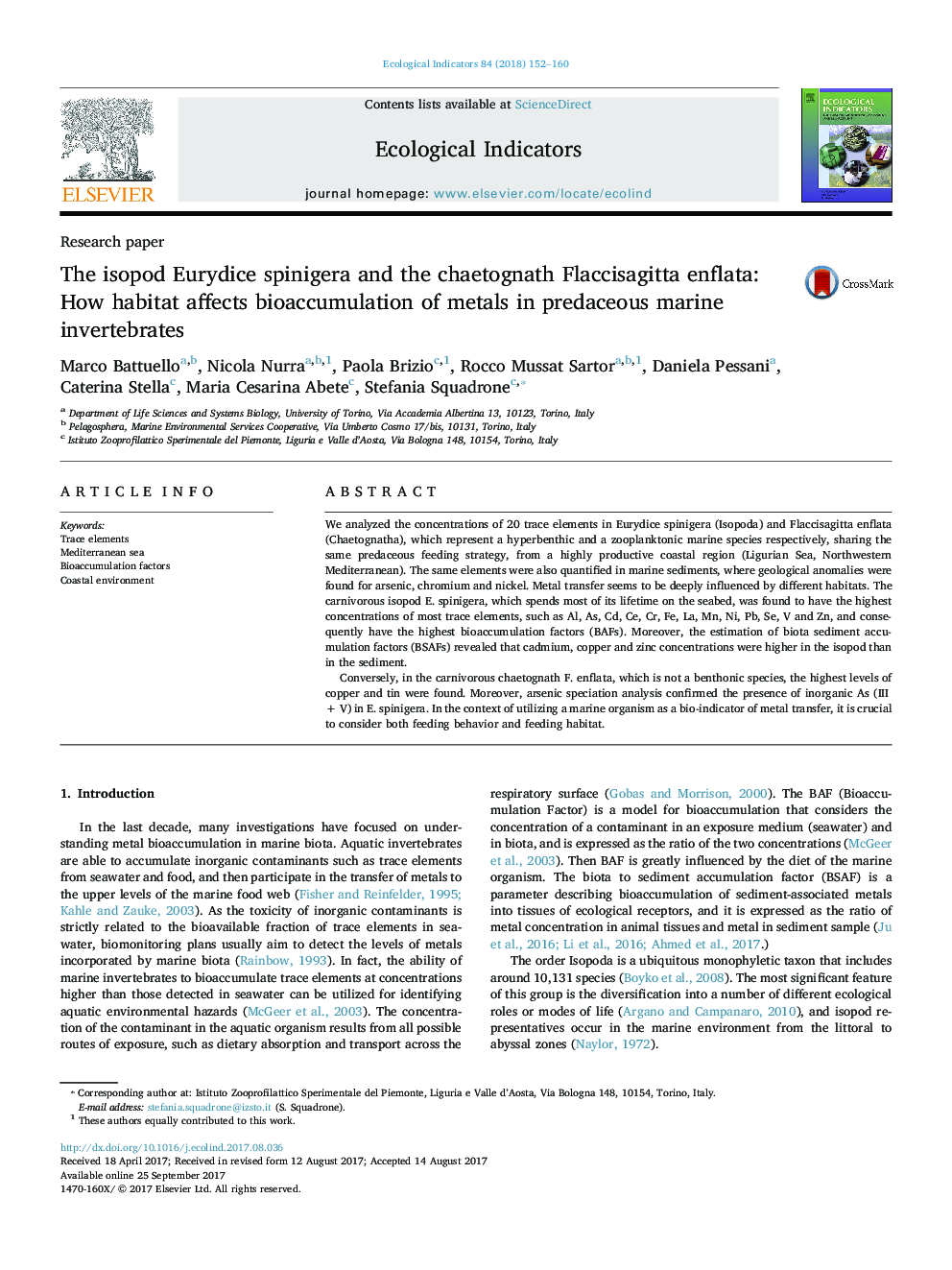| کد مقاله | کد نشریه | سال انتشار | مقاله انگلیسی | نسخه تمام متن |
|---|---|---|---|---|
| 5741537 | 1617118 | 2018 | 9 صفحه PDF | دانلود رایگان |
- Trace elements were detected in two predaceous species of Isopod and Chaetognath.
- Their different habitats greatly affected metals bioaccumulation.
- Arsenic speciation showed the presence of inorganic As in the Isopod.
- Arsenic and nickel concentrations in sediment were higher than those recommended by SQA.
- Both species could represent suitable bio indicators of different marine habitats.
We analyzed the concentrations of 20 trace elements in Eurydice spinigera (Isopoda) and Flaccisagitta enflata (Chaetognatha), which represent a hyperbenthic and a zooplanktonic marine species respectively, sharing the same predaceous feeding strategy, from a highly productive coastal region (Ligurian Sea, Northwestern Mediterranean). The same elements were also quantified in marine sediments, where geological anomalies were found for arsenic, chromium and nickel. Metal transfer seems to be deeply influenced by different habitats. The carnivorous isopod E. spinigera, which spends most of its lifetime on the seabed, was found to have the highest concentrations of most trace elements, such as Al, As, Cd, Ce, Cr, Fe, La, Mn, Ni, Pb, Se, V and Zn, and consequently have the highest bioaccumulation factors (BAFs). Moreover, the estimation of biota sediment accumulation factors (BSAFs) revealed that cadmium, copper and zinc concentrations were higher in the isopod than in the sediment.Conversely, in the carnivorous chaetognath F. enflata, which is not a benthonic species, the highest levels of copper and tin were found. Moreover, arsenic speciation analysis confirmed the presence of inorganic As (IIIÂ +Â V) in E. spinigera. In the context of utilizing a marine organism as a bio-indicator of metal transfer, it is crucial to consider both feeding behavior and feeding habitat.
Journal: Ecological Indicators - Volume 84, January 2018, Pages 152-160
